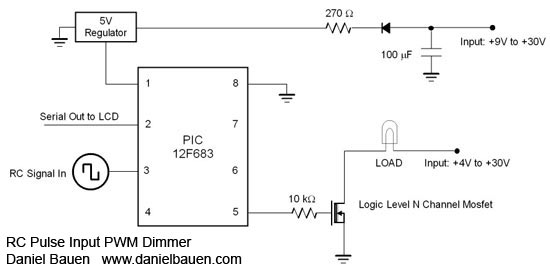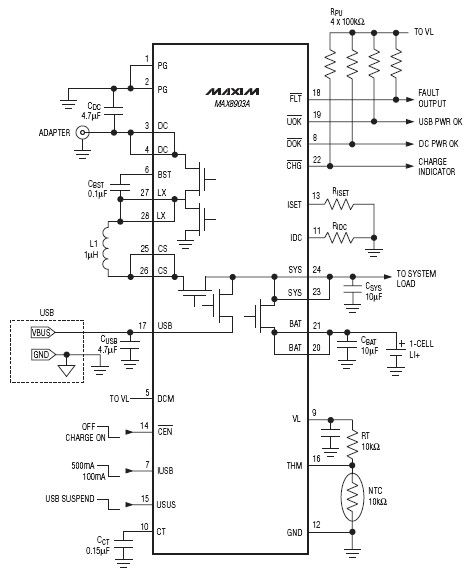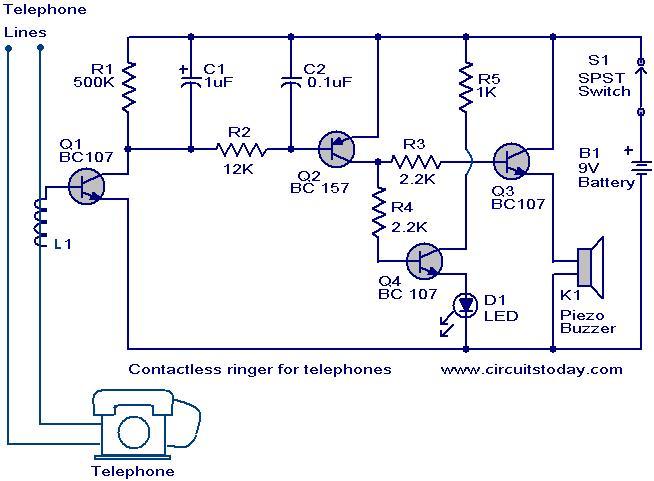
Proximity Sensor Circuit

This presence detector or proximity sensor circuit responds to the presence of any conductive object, including humans. The sensitivity can be adjusted with potentiometer P1, which is positioned at a considerable distance from the rest of the circuit. This circuit does not detect movement but functions as a proximity sensor. The sensitivity of the sensor can be fine-tuned with P1 to achieve the desired detection range. One practical application is to enable automatic door opening, necessitating the sensor's placement in front of the door. The presence detector comprises an oscillator using transistor T1 and a monostable circuit. The oscillator is a Clapp oscillator, recognized for its frequency stability. The sensor's surface serves as a capacitor for the oscillator circuit, with an operating frequency of approximately 1 MHz. The switching time can be modified with potentiometer P2. Caution is advised against bringing metallic objects near the circuit, as this may cause the relay to remain closed. Additionally, this circuit can serve as a detector for aggressive liquids, with the benefit that the sensor surface does not come into contact with the liquid.
The presence detector circuit operates fundamentally on the principles of capacitance and oscillation. The Clapp oscillator configuration employed in this circuit is notable for its high frequency stability, which is crucial for reliable operation. The oscillator's frequency is primarily determined by the capacitance introduced by the sensor surface and the associated components. When a conductive object approaches the sensor, it alters the capacitance, which in turn affects the oscillation frequency. This change in frequency is detected by the monostable circuit, which can trigger a relay or other output mechanism.
Potentiometer P1 allows the user to adjust the sensitivity of the sensor, enabling it to detect objects at varying distances. This feature is particularly useful in applications where the detection range needs to be tailored to specific environments or requirements. The second potentiometer, P2, provides control over the switching time, allowing for adjustments to how quickly the circuit responds to the detected presence.
The circuit is designed to avoid false triggers from nearby metallic objects, which can inadvertently cause the relay to close. This is achieved through careful component selection and circuit design to ensure that only intended conductive objects activate the sensor.
In applications involving aggressive liquids, the design advantage lies in the non-contact nature of the sensor surface. This prevents potential damage or corrosion that could occur if the sensor were to be directly exposed to such substances. The versatility of this presence detector circuit makes it suitable for a range of applications, from automatic door systems to safety mechanisms in environments where liquid detection is necessary.This presence detector or proximity sensor circuit reacts in presence of any conductor object including humans. Sensitivity is adjustable with P1 which will be located at a great distance from the rest of the presence detector circuit.
This circuit does not detect object movement but can act as an proximity sensor! The sensitivity of the proximity sensor circuit can be adjusted with P1 for the desired distance . One of its obvious uses is to open a door automatically. For this the sensor must be placed on the front of the door. The presence detector is made of one oscillator with T1 and a monostable. The oscillator is a Clapp one, well known for its frequency stability. The surface of the sensor acts as a capacitor for the oscillator circuit and in this configuration the frequency is around 1 MHz. The switching time can be adjusted with P2. Do not bring metallic objects in the proximity of the circuit because if doing so the relay will stay closed!
This circuit can be used as a detector of aggressive liquids, the advantage being that the surface of the sensor will not come in contact with the liquid. 🔗 External reference
The presence detector circuit operates fundamentally on the principles of capacitance and oscillation. The Clapp oscillator configuration employed in this circuit is notable for its high frequency stability, which is crucial for reliable operation. The oscillator's frequency is primarily determined by the capacitance introduced by the sensor surface and the associated components. When a conductive object approaches the sensor, it alters the capacitance, which in turn affects the oscillation frequency. This change in frequency is detected by the monostable circuit, which can trigger a relay or other output mechanism.
Potentiometer P1 allows the user to adjust the sensitivity of the sensor, enabling it to detect objects at varying distances. This feature is particularly useful in applications where the detection range needs to be tailored to specific environments or requirements. The second potentiometer, P2, provides control over the switching time, allowing for adjustments to how quickly the circuit responds to the detected presence.
The circuit is designed to avoid false triggers from nearby metallic objects, which can inadvertently cause the relay to close. This is achieved through careful component selection and circuit design to ensure that only intended conductive objects activate the sensor.
In applications involving aggressive liquids, the design advantage lies in the non-contact nature of the sensor surface. This prevents potential damage or corrosion that could occur if the sensor were to be directly exposed to such substances. The versatility of this presence detector circuit makes it suitable for a range of applications, from automatic door systems to safety mechanisms in environments where liquid detection is necessary.This presence detector or proximity sensor circuit reacts in presence of any conductor object including humans. Sensitivity is adjustable with P1 which will be located at a great distance from the rest of the presence detector circuit.
This circuit does not detect object movement but can act as an proximity sensor! The sensitivity of the proximity sensor circuit can be adjusted with P1 for the desired distance . One of its obvious uses is to open a door automatically. For this the sensor must be placed on the front of the door. The presence detector is made of one oscillator with T1 and a monostable. The oscillator is a Clapp one, well known for its frequency stability. The surface of the sensor acts as a capacitor for the oscillator circuit and in this configuration the frequency is around 1 MHz. The switching time can be adjusted with P2. Do not bring metallic objects in the proximity of the circuit because if doing so the relay will stay closed!
This circuit can be used as a detector of aggressive liquids, the advantage being that the surface of the sensor will not come in contact with the liquid. 🔗 External reference





